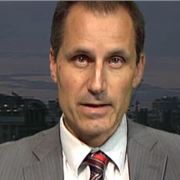LIVERPOOL has more schools classed as good or outstanding than any other big city in the country, it has been revealed.
Government education inspectors found that more than four out of five Liverpool children went to a gold-star primary or secondary school.
The same, however, could not be said across Merseyside and although primary school standards ride high in all boroughs, once children in Sefton, Knowsley and St Helens reach 11, the figure drops dramatically to around half.
But one Sefton MP has accused the Government of shifting the goalpoasts in the way it now grades schools, while Ofsted's North West chief has branded the situation a "postcode lottery" that needs urgent attention.
Triumphant
The 2012/13 annual report from Her Majesty’s Chief Inspector of Schools (HMCI), Sir Michael Wilshaw, shows that, as of August 31, 2013, 84 percent of Liverpool's 122 primary schools and 82 percent of the 29 secondary schools were classed as good or outstanding.
The city council is triumphant, saying it continues Liverpool’s record of performing better any of the other major "core" cities – Leeds, Manchester, Birmingham, Bristol, Newcastle, Nottingham and Sheffield.
"It is a major turnaround from just over a decade ago, when 25 schools were judged to have either serious weaknesses or be in special measures, and Liverpool's education service was on the brink of being privatised because it was failing children," it says.
Schools watchdog Ofsted announced last year that "good" is the minimum standard it expects from schools, and "the data places Liverpool is in a stronger position than every other big city in the country".
Councillor Jane Corbett, Cabinet Member for Education, said: “I am absolutely delighted that we have maintained our position as the leading big city for education.
 Bill Esterson: Tory reforms
Bill Esterson: Tory reforms
have undermined schools “It is an incredible achievement and demonstrates clearly the extremely strong and positive relationship between schools, teaching staff, governing bodies and the local authority’s School Improvement Service in driving up standards and giving children the best possible start in life."
In Wirral, 85 percent of primary age pupils attended good or outstanding schools, falling to 71 percent at senior level.
However the performance gap widened dramatically in the rest of the city region, with only 46 percent of high school pupils in St Helens and 50 percent of Knowsley getting the chance to attend top flight schools.
"Access to good or outstanding secondary education is a postcode lottery for too many young people," stated the report, which also found, perhaps unsurprisingly, that at the age of 16, students eligible for free school meals do less well at GCSE than similar students nationally.
In Sefton, 94 percent of primary school children - the highest number in the North West - had a chance of attending a good or outstanding school.
However the secondary figure fell to 56 percent, with many schools that were previously judged "outstanding", being reclasssified by OFSTED as "needing improvement" or worse.
 Just 56pc of Sefton pupils can expect to go to a good or outstanding high school, according to Ofsted findings
Just 56pc of Sefton pupils can expect to go to a good or outstanding high school, according to Ofsted findings
Sefton Central Labour MP Bill Esterson, who is a member of the Commons Education Select Committee, disputed the findings and said the Government's method of inspecting schools was designed to "catch teachers out".
He told Liverpool Confidential: "Recent changes in the way the Government measures schools and the way that Ofsted grades schools during inspections have increased the pressure and have made life very difficult for schools that until recently were graded good or outstanding.
"An outstanding school does not become inadequate overnight yet according to Ofsted this has happened to a number of schools up and down the country and I do not believe that children are being helped by a regime which is designed to catch schools doing something wrong.
He added: "It is clear to me from visiting schools in Formby, Crosby, Maghull, Aintree and Melling that we have many excellent schools where the teachers do a very good job despite being under constant attack from a Tory/LibDem government that has undermined our schools with the speed of its reforms without looking at the evidence of what is right for children.
"The measurement of schools and the inspection of schools should be done as a way of helping schools to do a good job and to continue to improve.
 Government Inspector
Government Inspector
Michael Cladingbowl"Under this government I fear that has not happened and what we have is a climate of fear where teachers and head teacher are terrified that they are going to be publicly judged to be underperforming with dire consequences for their job prospects.
"We should be supporting our schools, our teachers and our children, not criticising them all the time."
But Michael Cladingbowl, Ofsted Regional Director for the North West, said: “For too many pupils, reaching the age of 11 can mark the end of a good education. The performance of secondary schools is variable. As a result it is down to where a child goes to school that will determine whether they receive a good education.
"This cannot be right and needs urgent attention."
North West figures
The following table shows the proportion of pupils attending good or outstanding schools in the North West:
|
Pupils in Good or better schools |
||
|
|
Primary |
Secondary |
|
|
|
|
|
Blackburn with Darwen |
81pc |
68pc |
|
Blackpool |
75pc |
47pc |
|
Bolton |
86pc |
69pc |
|
Bury |
80pc |
95pc |
|
Cheshire East |
90pc |
77pc |
|
Cheshire West and Chester |
82pc |
81pc |
|
Cumbria |
83pc |
63pc |
|
Halton |
80pc |
57pc |
|
Knowsley |
88pc |
50pc |
|
Lancashire |
80pc |
77pc |
|
Liverpool |
84pc |
82pc |
|
Manchester |
80pc |
62pc |
|
Oldham |
77pc |
57pc |
|
Rochdale |
83pc |
73pc |
|
Salford |
75pc |
47pc |
|
Sefton |
94pc |
56pc |
|
St. Helens |
89pc |
47pc |
|
Stockport |
87pc |
72pc |
|
Tameside |
72pc |
46pc |
|
Trafford |
93pc |
90pc |
|
Warrington |
78pc |
75pc |
|
Wigan |
83pc |
81pc |
|
Wirral |
85pc |
71pc |














